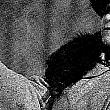A Sister Remembers the Career of Etta S. Wilson
by Clara B. Joyce
Mrs. Wilson began her bird work at Indianapolis, Indiana, in 1908. She started with a nature study club, studying the song birds as a hobby, but her unusual ability to locate rare birds in the vicinity of Indianapolis, and her correct and explicit report of them to the Department of Agriculture, Washington, D.C. soon brought the attention of the National Audubon society of New York City to the scientific value of her reports and records of wild birds of Indiana. At their request, Mrs. Wilson began a course of educational lectures on wild bird life illustrating her lectures with her own lantern slides and those loaned for the purpose by the government. She spoke before Indiana sportsmen's clubs, ministerial associations, public and state schools, going wherever her services were needed in the State of Indiana under the national societies' educational plan, often addressing audiences of more than 20,000 persons a week. Mrs. Wilson's intensive bird work in Indiana covered a period of years from 1908 to 1917.
While engaged in bird work in Indiana for the National Audubon society, the United States Department of Agriculture, Bureau of Biological Survey, requested her bird reports and records, furnishing her with the necessary blanks to fill out as required by the biological survey. The bureau frequently called her to Washington. D.C. to check over the bird reports from Michigan and required her to prepare an annual spring schedule of birds passing through Indiana and at various other times to make both spring and fall schedules of migrations with notes and records of birds seen wintering in Indianapolis for recording by the government bureau. This was the beginning of Mrs. Wilson's bird work for the government and which continued after she went to Detroit, Michigan to reside, in 1917.
In one of Mrs. Wilson's reports to the government bureau on Indiana bird schedules was the record of the movements of birds at Indianapolis and at Grand Rapids, Michigan, in the fall of 1914, which showed that the ordinary migration season in these two cities far surpass the largest bird waves they ever have in Washington, D.C. The report was especially on warblers.
When Mrs. Wilson removed from Indianapolis in 1917 and took up residence in Detroit, she continued her bird work under the United States Bureau of Biological Survey, and local ornithological societies.
In 1929, under the direction of Harry C. Oberholser, Senior Biologist of the Division of Biological Investigation, Mrs. Wilson took a water fowl census on Grosse Isle, and this report was also accepted by the Canadian government which evinces great interest in water birds migrating in bordering Canadian waters.
Because of her infinite knowledge of wild bird lore, her services were often in demand where the identity of a bird was necessary to preserve it if its life were at stake. Such a regrettable incident occurred in Detroit in January, 1921, when a bird lover hastily summoned her into downtown Detroit where an unidentified bird, presumed to be one of a pair of wild hawks, was about to be shot. She arrived downtown too late to save the bird, and very regretfully she identified it as a female Peregrine Pigeon, or falcon, protected as a vanishing species. Its mate had escaped.
Mrs. Wilson's long article on the passing of the Passenger Pigeon, of whose slaughter she was an unwilling witness in her early childhood, and which gentle bird she lived to see go to its complete extinction was read at the Semi-centennial Anniversary of the American Ornithologists Union, held at New York City, November 14 to 16, 1933, and has become history. The picture of the wanton cruelty of large flocks of passenger pigeons shot down and packed into barrels for shipment to markets, always remained with her, and it was this picture of the destruction of the passenger pigeon taken from her memory of it that she put into the paper read before the American Ornithologists' Union in New York City, and was without doubt, the underlying influence which caused her to so devotedly give so many years to the service of America's wild birds.
Mrs. Wilson was chairman in 1931 of the convention committee of the American Ornithologists' Union at the forty-ninth stated meeting, October 19 to 24, held at the Book-Cadillac Hotel, in Detroit, Michigan, the first woman so honored. She was a member of the Indiana Academy of Science, life member of The Indiana Audubon Society, the American Ornithologists Union, National Association of Audubon Society and for a number of years national lecturer in Indiana for the National Audubon Society.
Excerpted from, The Ornithological Work of the Late Etta S. Wilson, Indiana Audubon Society, Vol IX, 1936

 facebook
facebook




